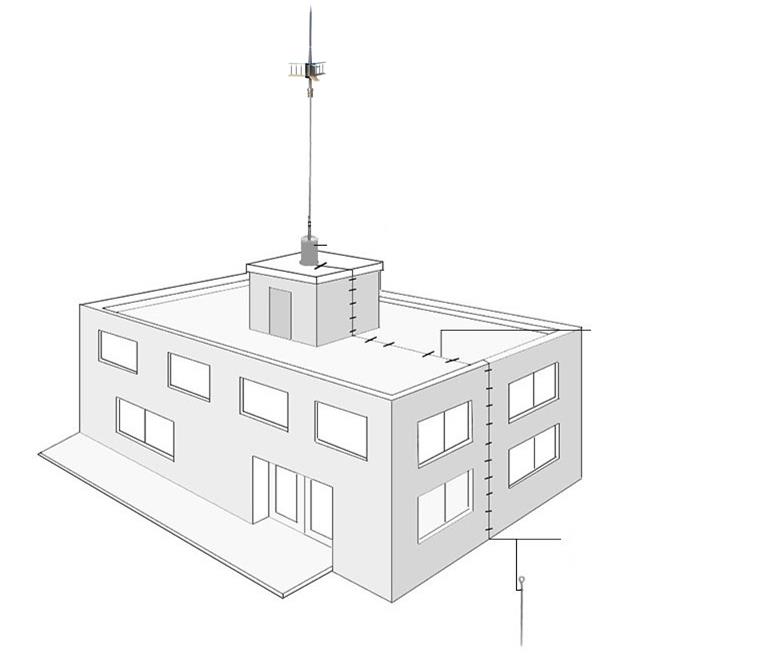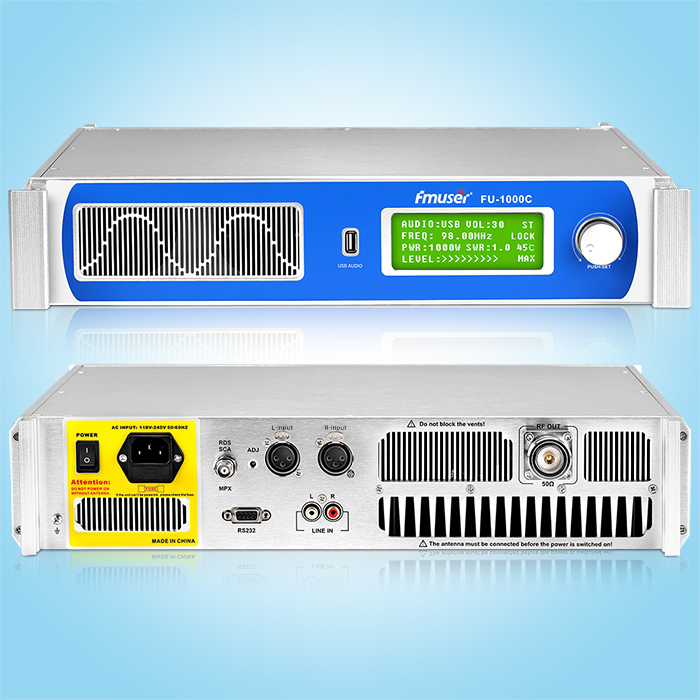OXC application field
The optical cross-interconnect switch (OXC) is a matrix optical switch for N × N ports, which can be used to construct CDC Roadm (colorless, no directionality, no competitive reusable light / down multiplexer), such as Figure 1 shows.
Figure 1. CDC ROADM structure based on WSS and OXC
OXC constructed based on 1 × N port optical switch
OXC can be constructed by an optical switch of 1 × N port, as shown in FIG. 2, in order to construct an OXC module of the N × N port, a light switch for 1 × N port is required, and the port number N increases, OXC The size and cost of the module increases sharply, so the number of ports of this OXC is usually limited to 32 × 32 ports.
Figure 2. Constructing 8 × 8 port OXC in 16 1 × 8 port light switches
OXC based on 2D MEMS technology
The second technical solution for achieving OXC is based on the Cross-Bar optical switch in MEMS microscope array, H. Toshiyoshi and H. Fujita, Tokyo University, Japan reported the first MEMS technology, with port extension potential. -BAR optical switch, as shown in Figure 3. The reported device has only two input ports and 2 output ports. The optical path switch is implemented by four MEMS micromiries, each microscope has two states, and is placed on the substrate to pass (OFF status) or It is straight over the substrate to reflect the beam (ON state).
Figure 3. CROSS-BAR matrix optical switch based on MEMS kniroscopy
The SEM photo of the MEMS chip and a single microscope, and the structure of the twisted mirror, as shown in Figure 4. The microscope is supported by a polysilicon beam. When the electrode does not add a bias voltage, the micromirror remains in a state; when power is applied, the micromirror is vertically at the substrate under the driving of electrostatic gravity.
Figure 4. Schematic diagram of SEM photos and structures for MEMS knirks
AT & T Laboratory et al. Reported the first 2D MEMS-based matrix optical switch in 1998, as shown in Figure 5, in order to achieve N × N port optical switch, a N × N-scale microscope array is required . All optical paths of the device are in one plane, which is why it is called 2D MEMS optical switch.
Figure 5. First 2D MEMS matrix optical switch structure
The switching of the optical path is achieved by the microscope shown in Fig. 6, the micromirror is attached to the substrate, one end of the two tilt rods, and the other end links one discharge station, the discharge station is microcomposed by one scraper Motor driver, pull the microscope forward. The microscope is deflected during the pulled process.
Figure 6. Schematic diagram of microscope structure
Omm's Li Fan et al. Reported another MEMS microscope array for matrix switches in 2002, as shown in Figure 7.
Figure 7. Omm company LI Fan et al. 2D MEMS microscope array
The matrix optical switch based on 2D MEMS microscope array has the advantages of simple structure and easy package, but its expansion is limited. As can be seen from Figure 5, the relationship between different port links, the optical path length is very different, which will introduce coupling losses and affect loss of loss. The tolerance to the optical path difference depends on the beam size in the free spatial optical structure. According to the formula (1), the smaller the spot ω0 is, the more diverge it, and the straight distance is obtained, the shorter distance is obtained.
As shown in Fig. 8 (a), the two single-mode fiber SMF is shown in Fig. 8 (a), as the spacing between the end surfaces increases, the coupling loss is increased, and the spacing between the two single-mode fibers is generally limited to "20 μm." . In order to increase the fiber spacing to allow placing a variety of free space optical elements, a thermal diffusing core (TEC) fiber or lens fiber is usually employed, respectively, respectively, as shown in Figs. 8 (b) and 8 (c), respectively. Both TEC fibers and lens fibers can expand the spot size to adapt to free space light transmission. The spacing between the two TEC fibers can reach ~ 10mm, and the spacing between the two lens fibers can be reached ~ 50mm. For some applications that require longer free space optical paths (such as the 3D MEMS optical switch to be mentioned below), a collimation lens is often required, as shown in Figure 8 (d).
Figure 8. Coupling method between fibers
So we know that the TEC fiber or lens fiber is applied to the 2D MEMS optical switch, which helps to increase the length of the free spatial optical path to accommodate more MEMS microscopy to achieve an expansion of the optical switch port. However, the maximum spot size allowed is limited to the size of the microscope, and the microscope size depends on the MEMS design and process. The microscope diameter ф "3ω0 (ω0 is spot radius) is usually required to reflect 99% of the optical power. Therefore, the maximum number of ports of the 2D MEMS optical switch is usually limited to 32 × 32.
OXC based on 3D MEMS technology
In order to further expand the number of ports of OXC, 3D MEMS optical switch is developed. The basic structure of 3D MEMS OXC is shown in Figure 9, which includes two MEMS microscope arrays and two two-dimensional fiber collimator arrays, each input fiber collimator corresponding to one microscope in the first MEMS chip. And each of the output fiber collimators corresponds to one microscope in the second MEMS chip, all micromiries on the MEMS chip are two-axis, as shown in FIG.
Figure 9. Basic structure of 3D MEMS OXC developed by NTT laboratory
Figure 10. Scanning electron microscope SEM photo of MEMS microscope array and biaxial microscope
The light beam from each input port is independently controlled by a microscope on the first MEMS chip, directing another micromirror on the second MEMS chip (target port corresponding to output) by biaxially deflection (target port corresponding to output), second A microscope adjusts the direction of the reflected beam through a biaxial deflection, pointing to the output port. Therefore, the optical signal can be exchanged to any output port from any input port by control of two MEMS chips. The 3D MEMS OXC is reported from NTT Labs in October 2003, and the prototype photo is shown in Figure 11.
Figure 11. Photo of the 3D MEMS OXC model developed by NTT laboratory
Bell Lab Va Aksyuk et al. Reported another 3D MEMS OXC in April 2003, which earlier than the NTT laboratory, here to mention the NTT laboratory work, because its OXC structure is relatively simple and Easy to analyze. The OXC structure and prototype photos developed by Bell Laboratory are shown in Figures 12 and 13, including two MEMS microscope arrays, two two-dimensional fiber arrays and a Fourier lens, each input - output link Another micromirror on the first MEMS chip and another micrograph on the second MEMS chip.
Figure 12. 3D MEMS OXC structure developed by Bell Laboratory
Figure 13. 3D MEMS OXC prototypes developed by Bell Laboratory
NTT Laboratory YUKO Kawajiri et al. Reported another 3D MEMS OXC, as shown in FIGS. 14 and 15, in which a ring concave mirror replaced a Fourier lens. Using an annular concave mirror reduces the depressive aberration of the edge port to reduce insertion loss.
Figure 14. The second 3D MEMS OXC structure developed by NTT laboratory
Figure 15. Photo of NTT Laboratory Development 3D MEMS OXC Motor Photo
The principle of the OXC in Figs. 12 and 14 is similar, relative to the OXC structure in Fig. 9, and the light beam size in the free space optical path is larger, so the loss can be reduced. In addition, the OXC structure in Fig. 9 requires the MEMS microscope to have a larger deflection angle, which increases the design difficulty of the MEMS chip.
Editor in charge: GT, read full text
Our other product:















